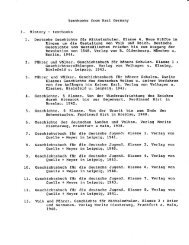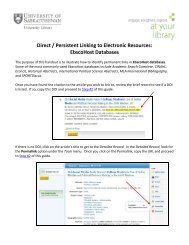GREEN SEED COAT COLOUR RETENTION IN LENTIL - University ...
GREEN SEED COAT COLOUR RETENTION IN LENTIL - University ...
GREEN SEED COAT COLOUR RETENTION IN LENTIL - University ...
Create successful ePaper yourself
Turn your PDF publications into a flip-book with our unique Google optimized e-Paper software.
carbohydrate, and micronutrient requirements from it. A balanced and nutritious<br />
diet can be formulated from cereals and lentil. Protein complementation occurs<br />
because the cereals are low in amino acids like lysine and leucine, while legumes<br />
like lentil have a relatively high content of these amino acids. Amino acids like<br />
methionine and cysteine that are low in lentil (Sell, 1993) are high in cereal making<br />
for balanced protein in the diet of monogastric mammals like humans and swine.<br />
2.1.2 Canadian Lentil<br />
Lentil is an important cash crop in Canada especially in Saskatchewan.<br />
Saskatchewan produces 99 percent of the Canadian lentil crop (SPG, 2007). In<br />
2005, 2.16 million acres of lentil were planted in Saskatchewan which produced<br />
1.26 million tonnes (SAFRR, 2007). Canada is the world’s largest lentil exporter.<br />
In 2003 Canada accounted for 44 percent of total international lentil exports<br />
(AAFC, 2007).<br />
There are two main types of lentil grown in Canada, red and green. They<br />
differ on the basis of seed coat colour and cotyledon colour. Green lentil has a light<br />
green seed coat with a yellow cotyledon while red lentil usually has a brown or grey<br />
seed coat with an orange to red cotyledon. Until 1997 green lentil was the prevalent<br />
type grown on over 95 percent of the seeded area. In 2006 Saskatchewan had more<br />
red lentil acres seeded than green lentil for the first time (Hursh, 2006). The value<br />
of the two market classes is somewhat independent as the markets and uses of the<br />
two market classes differ. Red lentil is primarily consumed after the seed coat is<br />
removed by abrasive dehulling while green lentil is usually eaten whole. Thus<br />
5

















